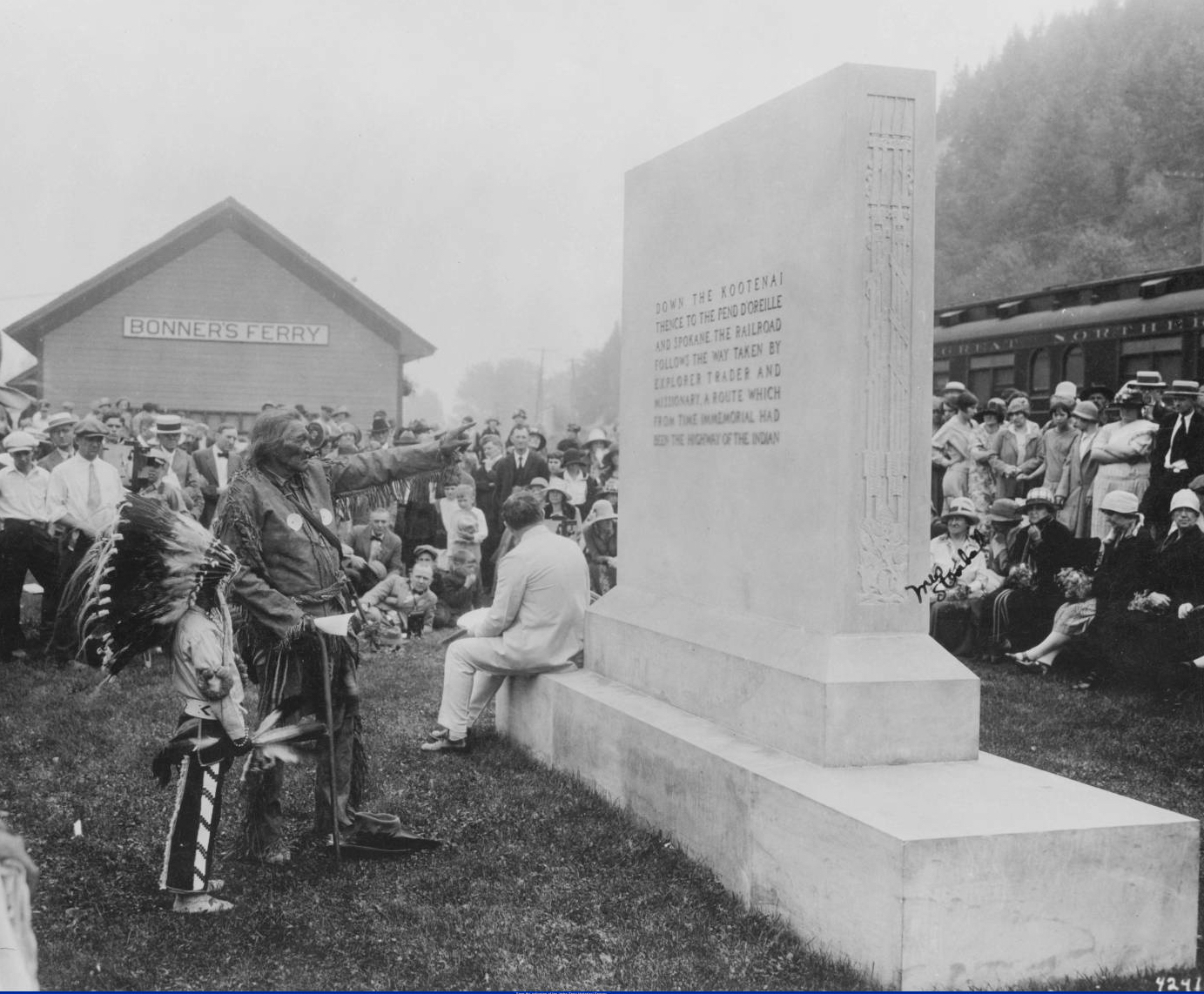
The Lewis & Clark Expedition disproved the existence of an easy, river-based Northwest Passage through the middle latitudes of North America. In the decades to follow, the Oregon Trail, the Pony Express, and various stagecoach routes allowed for difficult, dangerous, and time consuming travel by land across the continent. Not until after the Civil War was safe, reliable, quick, and relatively inexpensive transcontinental travel available in the form of railroads. The first route through the central part of the country ran well south of the northern area near the Canadian border. Once the final spike was hammered down in the Cascade Range near Scenic, Washington on January 6, 1893, the dream of James J. Hill, “The Empire Builder,” was realized with completion of the Great Northern Railway. The Mississippi River at the Twin Cities of Minneapolis-St. Paul, Minnesota was now effectively united with the Pacific coast at Everett and Seattle, Washington via the most northerly American rail route. A man-made Northwest Passage was now a reality.
While generally north of the route Lewis & Clark and the Corps of Discovery took, the Great Northern tracks were occasionally in proximity and served as a convenient means for early travelers to visit locations associated with the pioneering 1803-06 Expedition. In 1925 and 1926, the Great Northern Railway conducted tours that unveiled several monuments to commemorate important people, places and events along the route.
This leg covers the western part of Montana and into Idaho during this centennial era. Consult additional Great Northern Route itineraries to continue travel east and west of this area.
You may also like our L&C Travel Magazine!
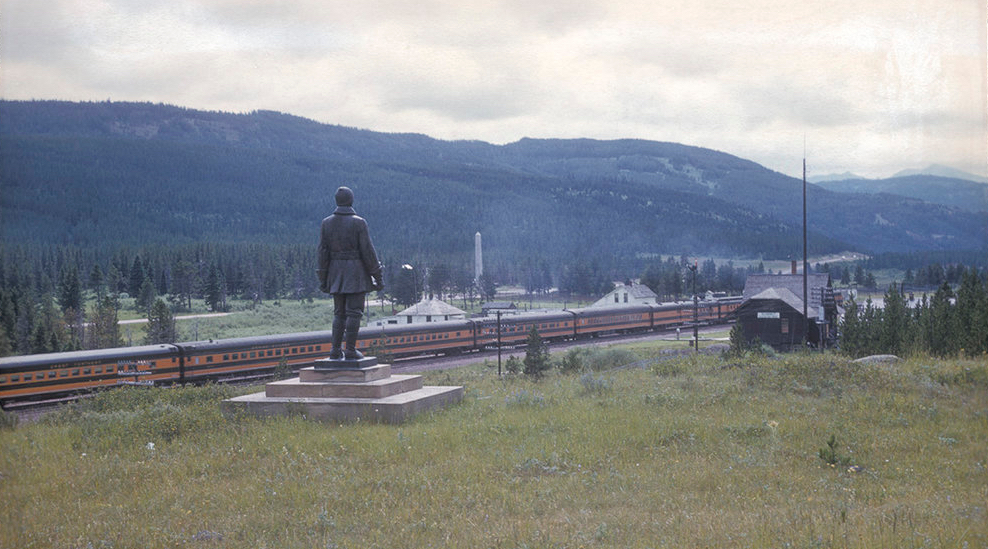
John F. Stevens was the chief construction engineer and discoverer of the crucial Marias Pass that enabled the Great Northern tracks to wend their way through the Rockies. In later life, Stevens was instrumental in the onset of construction of the Panama Canal. The elevation of Marias Pass is 5,213 feet, nearly one mile above sea level.
Dedicated on July 21, 1925, the Stevens statue has since been moved to be near an obelisk erected to commemorate Theodore Roosevelt. Completed in 1931, the obelisk stands sixty feet above the surface, with an additional nineteen feet below ground.
John F. Stevens III was on hand to unveil the statue of his grandfather sculpted by Gaetano Cecere. The subject of the statue was also in attendance (he would not die until 1943) and he said a few words. “The many years which I spent in the service of the Great Northern Railway, years which covered the best part of my active life, were by far, to me at least, the most satisfactory of my career,” he said. “The knowledge. . . which I gained from that master mind, James J. Hill, has been, since I first met him, the dominant influence in my working career.” He went on to say, “It is a common truism that corporations have no souls. But I think that you will all agree with me that one corporation has a soul, and that it is wonderfully shown here today, and besides soul, this one has lasting memory.”
Supreme Court Justice Pierce Butler and the president of the American Society of Civil Engineers, Robert Ridgeway, also spoke. Great Northern Songsters sang three songs, including “I’ve Been Working on the Railroad.”
After the ceremony concluded, the Upper Missouri Historical Expedition train went on to West Glacier. Western artist Charlie Russell hosted a reception for the group at his cabin near Lake MacDonald. They enjoyed dinner at Lake MacDonald Lodge and, after one more night at Glacier Park Lodge, the train returned to St. Paul the next day. The 1925 Great Northern Expedition had ended, but we will continue our modern-day journey to see a monument that was unveiled in 1926.

Continue west on US 2 and turn south onto Hungry Horse Dam Road. The Hungry Horse Dam was built on the south fork of the Flathead River. When completed in 1953, it was the fourth highest in the US at 564 feet. Beautiful views and a visitor center with displays on power generation and flood control enhance this stop a few miles south of US 2. Excellent recreational opportunities abound in the surrounding area.
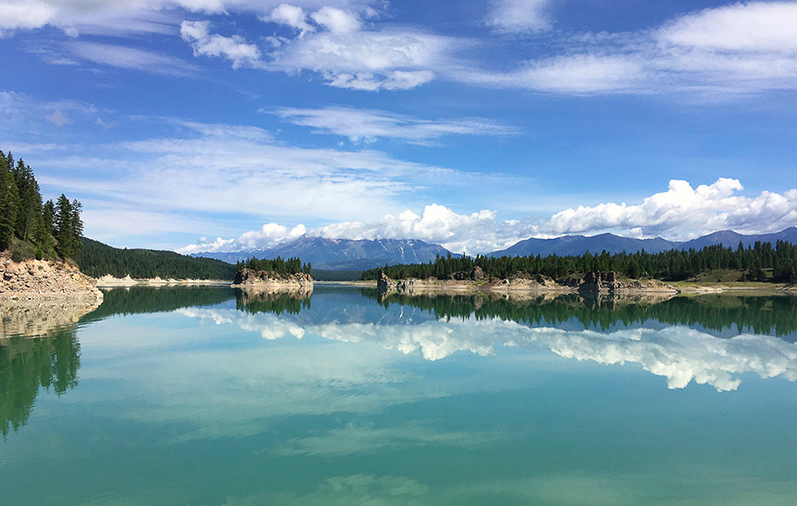
Continue west to Columbia Falls where the traveler has a choice: Stick with the tracks and go north on US 93 to approach the Canadian border before turning back south on MT 37 along the Lake Koocanusa Scenic Byway and the Kootenay River to Libby, Montana; or leave the tracks and stay on US 2 west through Kalispell on the somewhat more direct route to Libby. Both routes have their charms. If you want to enter Canada, be sure to bring your passport.

A river runs through Libby, Montana, the film setting for the 1992 movie based on the Norman Maclean book. Kootenai Falls, twelve miles west of town on US 2, is one of many opportunities to enjoy the outdoors. Be sure to walk across the swinging bridge to get a better view!
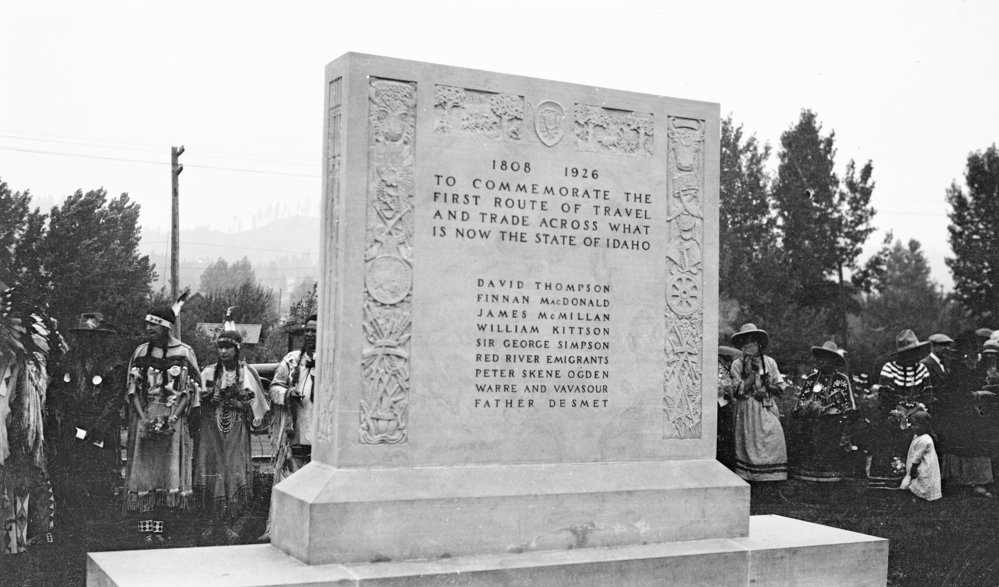
Continue west on US 2 to follow the Great Northern route into Idaho. The 1926 Columbia River Historical Expedition train took a spur line north from Great Falls to Shelby, Montana. Then, after traveling west on the main line, the group stopped in Bonners Ferry on July 19, 1926 to dedicate the monument honoring fur traders, explorers and missionaries. Originally located close to the tracks, it has been moved to be near a veterans memorial on the Boundary County Library grounds.
The morning dedication ceremony included speeches about David Thompson by T. C. Elliott and a Canadian geologist named Joseph Tyrrell, who had discovered Thompson’s journals in 1894 and published them in 1916. A booklet by Grace Flandreau entitled “Koo-koo-Sint the Star Man,” meaning “person who watches the stars,” was distributed to attendees. The train left about noon for Spokane, where talks on fur traders and missionaries preceded a picnic dinner.
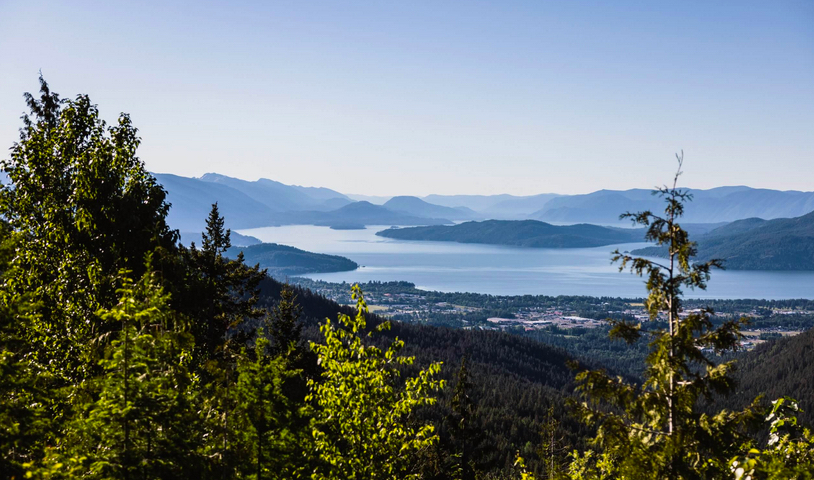
Continue to parallel the Great Northern tracks to Sandpoint, Idaho, the gateway to Lake Pend Oreille (POND uh ray). Fed by the Clark Fork River, which was named in another section by William Clark, and downriver from a town called Thompson Falls, the lake is the second deepest in the US after Crater Lake, and was a testing site for submarines during World War II. Gorgeous scenery, historical connections to David Thompson, who explored and established a trading house in the area, shopping, restaurants, and outdoor recreation of all sorts make Sandpoint a marvelous destination. Check out the modernistic Thompson statue downtown across from the post office.
Our bi-weekly newsletter provides news, history, and information for those interested in traveling along along the Lewis & Clark Trail.